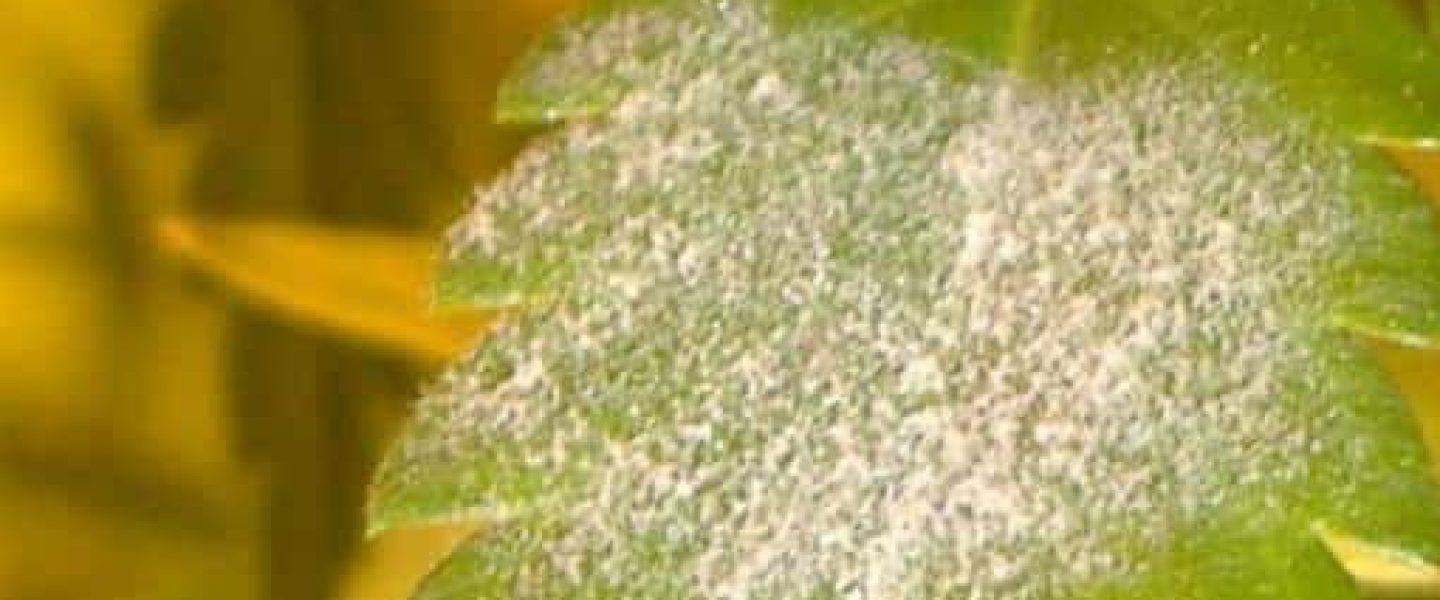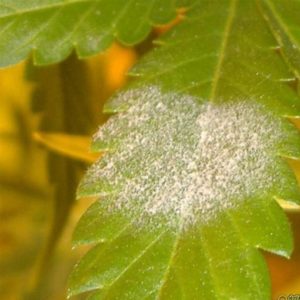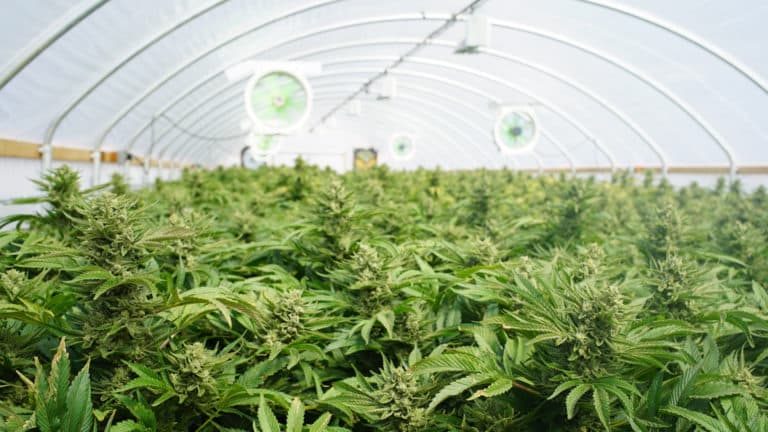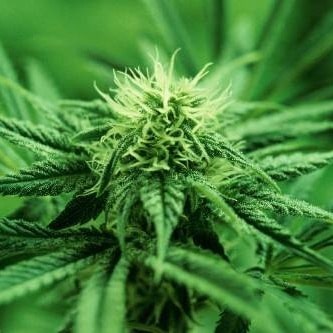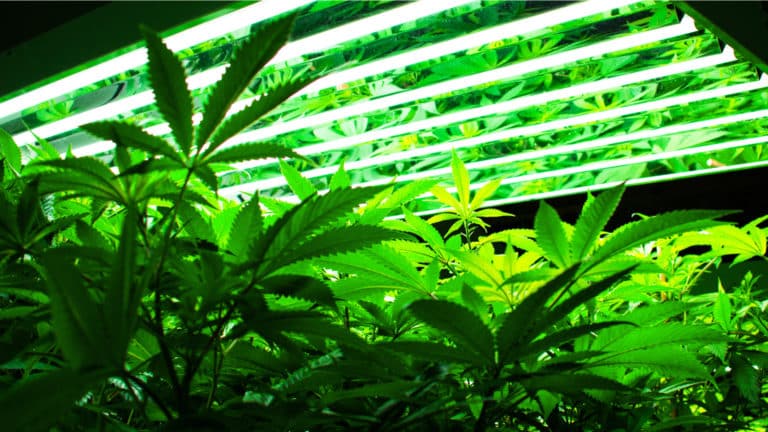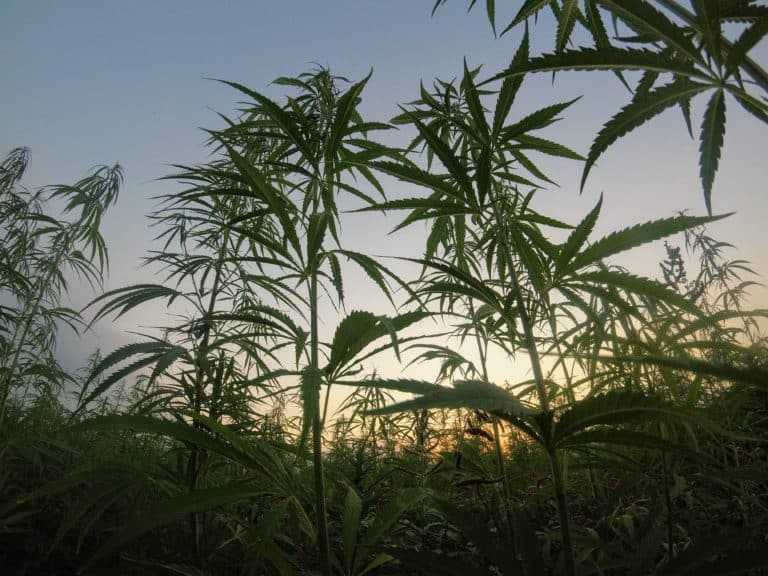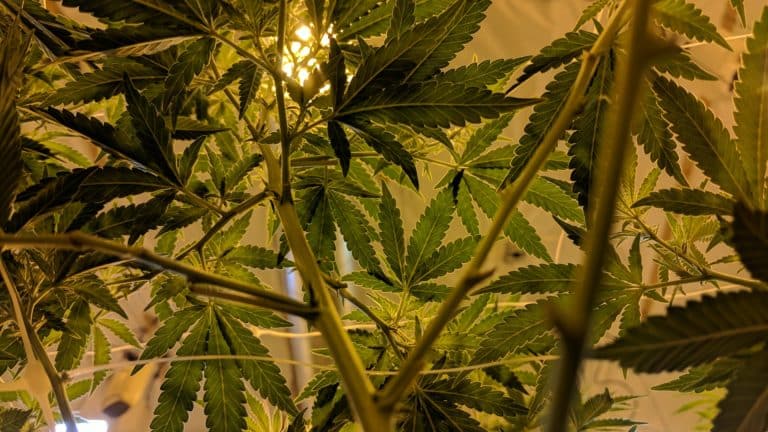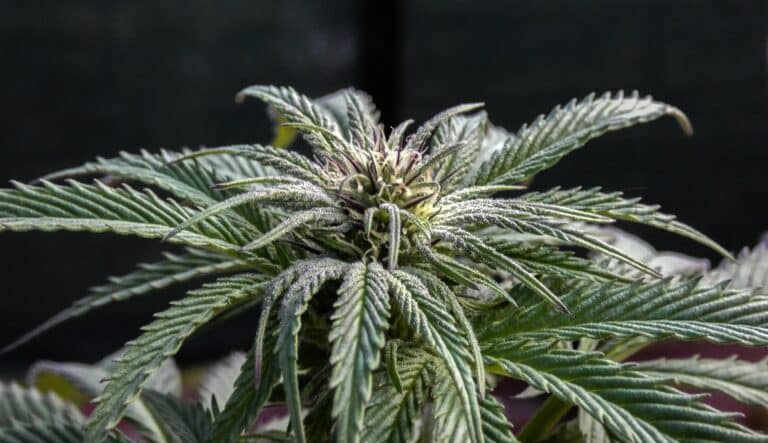Ampelomyces Quisqualis
These are naturally occurring hyperparasites of powdery mildew. They form colonies on the infection, reducing growth and may eventually kill powdery mildew on cannabis leaves. Rain perpetuates the life cycle of this beneficial fungus. A formulated powder is available under the brand name AQ-10.
Bacillus Pumilus
Bacillus Pumilus is a spore-bearing bacterium found in soil. It is resistant to environmental stresses, include UV light. The growth of Bacillus Pumilus on plant roots prevents Fusarium spores from germinating. A commercial product is available by the name of Sonata. Application boosts the cannabis plants’ immune system, inhibiting fungal germination and growth.
Bacillus Subtilis
Bacillus Subtilis is a naturally occurring anti-fungal bacterium found in soils. It has proven to fight blight, gray mold and several strains of mildew, yet has no adverse affects on the environment or humans. For this reason, it has been approved as a fungicide and bactericide for use in organic farming. Bacillus Subtilis compounds prevents pathogens from colonizing crops. This biological fungicide can be procured online under several brand names. Two strains are available; one for foliage applications (QST 713) and one to be used as a soil amendment at the time of planting (GB03 or MBI600).
Barley Straw Rafts and Pellets
Barley straw rafts are used in hydroponic cannabis systems to inhibit the growth of algae. Barley straw does not kill existing algae but does prevent the growth of new algae cells. While barley straw has not been approved by the EPA for use in public waters, it is available for purchase by homeowners for hydroponics and private ponds.
Copper
The use of copper as a fungicide has been practiced for centuries. The most popular use today is in the form of Bordeaux Mixture, which combines copper sulfate with lime. The purpose of adding lime to copper sulfate is to reduce the damaging effect copper sulfate can have on marijuana plants. It is an added benefit that Bordeaux Mixture is also effective in controlling bacteria. As such, it is a good combatant for plant diseases caused by fungi and bacteria such as powdery mildew, downy mildew, leaf spots and fire blight. Bordeaux Mixture is a good option for controlling these diseases on outdoor grown marijuana plants, as it withstands rains, enabling its effect to remain on the foliage. However, it should only be applied before the flowering stage. Use a diluted solution on young plants to prevent burning of the tender leaves. Also avoid applying in temperatures over eighty five degrees to avoid the leaves yellowing and dropping off the plants. Follow label directions before using.
Gliocladium – Beneficial Fungus
Gliocladium is a species of parasitic fungus living in the soil. It produces volatile organic compounds which are toxic to other fungi and bacteria. Gliocladium protects Mary Jane from gray mold by suppressing spore production. It is best applied as a soil drench and is available under several brand names.
Hydrogen Peroxide
This common product found in drug stores and supermarkets, at 3% concentration, is a natural treatment for algae, gray mold, Pythium and powdery mildew. Using hydrogen peroxide on your marijuana plants will not bring them harm. Peroxide helps aerate the soil by adding oxygen and is both anti-fungal and anti-bacterial. Cannabis plants can be fed a mixture of hydrogen peroxide and water as a fertilizer and disease deterrent, resulting in healthy plants. It can be misted on the leaves and/or applied directly to the soil. An easy way to apply is to fill a clean fertilizer spray bottle that attaches to a garden hose and feed as you would, say Miracle Gro. The bottle will have gallon markings on it. Fill the bottle with peroxide. When you turn on the hose, it will automatically dilute. If feeding sick plants, add one cup 3% hydrogen peroxide per gallon of water. Pour into a spray bottle and spritz the leaves, making sure to cover completely. For general feeding, add one half cup to a gallon of water.
Hydrogen peroxide can also be added to the water in hydroponic environments. It can be used to sprout seeds by adding it to the water they soak in before planting; they will sprout quicker and grow stronger. Follow the general application recipe for the peroxide to water ratio if using to soak seeds.
Milk
Just as milk is essential to a healthy human diet by building the immune system and providing good bacteria to ward off infection, it works in much the same way for plants, including marijuana. Milk is a natural germicide and may boost plants’ immune systems in much the same way it does humans. It is a formidable treatment for powdery mildew. Applying weekly sprays of one part milk to nine parts water significantly reduces the presence of powdery mildew and will prevent it from forming if the plants are not currently affected. When rinsing empty milk bottles prior to putting in the recycle bin, pour the diluted milk around your plants rather than pour it down the drain. Your plants will love it!
Milk also acts as a disinfectant. Dip your gardening tools in milk, rather than bleach, when sterilizing between uses.
Neem Oil
Neem oil is extracted from the nut of the neem tree, native to India. The insecticidal component of neem oil is azadirachtin which when applied, stops insects from feeding and developing. Neem oil is an effective defense against ants, aphids, fungus gnats, leaf miners, mealy bugs, scale, thrips, white flies and root weevils. Other components in neem oil have fungicidal properties combating gray mold, root rot, Septoria and powdery mildew.
The beauty of using neem oil in the cannabis garden is its low toxicity factor for humans, animals and the beneficial bugs you want to keep around. Neem oil is so safe for humans it is an ingredient in many household items such as toothpaste, shampoo and cosmetics. It is considered an organic control, will not harm the environment and can be found at local lawn and garden centers.
Neem oil can be applied as a foliar spray, soil drench and is safe to use in hydroponic systems. In the latter, apply one teaspoon per quart of water. The oil will be taken up by the root system and distributed throughout, protecting the plant from attack.
As a foliar spray, test an inconspicuous area of the marijuana plant before applying to the entire plant. Wait twenty four hours to see if it is well tolerated. Once confirmed, spray the leaves lightly. This should be done weekly until there is no longer evidence of pests or disease. Do not apply in extreme temperatures or during the day. Apply at night to allow the leaves to absorb the oil.
pH Up and pH Down
Maintaining the proper pH level of your cannabis garden, whether soil grown or hydroponically, is vital to deterring the growth of disease bearing fungi. Highly acidic environments lend themselves to the fungi species that can be detrimental to your growing efforts.
pH Up and pH Down is used in hydroponic situations to adjust the alkaline and acidity levels. Tap water typically is at the 8.0 level due to the high alkaline content. The optimum pH level for hydroponically grown plants is 5.5 – 6.5. Acids are used to lower the pH level, while alkalis are used to raise the level. Be sure to use a product labeled for hydroponic use or you can damage the crop.
Potassium Bicarbonate
Potassium bicarbonate is a water soluble compound often used to neutralize acidic soil in crops. It is now under consideration as an organic fungicide. Potassium bicarbonate is a synthetic compound resultant of a combination of potassium carbonate, carbon dioxide and water and is found naturally in virtually all life forms. It is most seen in crystal form or as a soft, powdery substance.
Potassium bicarbonate is an effective defense against powdery mildew, Septoria leaf spot, blight and many other fungal diseases. To apply, mix three tablespoons potassium bicarbonate, three tablespoons oil and one half teaspoon castile soap with one gallon water. Pour mixture into a spray bottle and mist the cannabis leaves. (This also works on most edible plants).
Potassium bicarbonate can be purchased from garden centers, hardware stores and pharmacies, or can be obtained online under various brand names.
Pseudomonas
Pseudomonas is a genus of bacteria found in water and plant seeds. The application of this strain became widely used in the 1980’s as a way to prevent the growth of crop pathogens. It is applied to the soil or seeds, in agriculture. It is believed the introduction of pseudomonas to the soil or seeds, induces systemic resistance of the emerging plant to pathogens. The application is available by several manufacturers to control many fungal and bacterial diseases. Pseudomonas refers to a variety of species, so check labels for the particular fix you need.
Quaternary Amines
This is a broad term referring to a class of compounds which act as disinfectants. Its use should be confined to cleaning gardening tools and work surfaces, but should not be applied to consumable plants. Sterilizing equipment and surfaces with quaternary amines will help guard against the spread of fungal pathogens to your cannabis or other plants. Check the internet for suppliers.
Silica and Silicate Salts
When silica is added to the soil, it provides a strengthening agent for plant cells; it facilitates thicker cell walls, which results in stronger stems. The availability of silica to a plant’s roots provides a protective barrier, dissuading fungal reach into the inner workings of the plant’s ability to uptake nutrients. The plant becomes more capable of surviving stress once clad with the armor silica provides. In addition, enhancing the soil with silica containing materials help to keep it aerated, allowing free flow of oxygen. This is good news for Mary Jane and her counterparts!
Hydroponic environments can also benefit from the addition of soluble silicon added to the water solution. The roots become stronger and healthier, resulting in increased yields. The addition of silica in either growing situation has proven to reduce the occurrence of powdery mildew.
Several forms of silica are available for soil or water growing media:
• Syna-Gro Po-Tekt, a potassium silicate solution, can be used in the soil, hydroponic systems and as a foliar spray.
• Pyrophyllite clay, and aluminum silicate in powder form, can be applied as a dust or foliar spray.
• Silica stone is used in hydroponic systems and can be re-used after a thorough cleaning.
• Greensand can be added to the soil to enhance the benefits of silica.
• Vermiculite and perlite is available at garden centers. Mix it into the soil. Many potting soils come with the amendments already added.
• Diatomaceous earth contains the shells of marine microorganisms. This amendment also serves as a control for soft organisms such as slugs, as the tiny shells pierce their skin causing dehydration through the loss of body fluids.
Silver
Colloidal silver has long been used as a defense against algae in swimming pools and hydroponic systems. It serves to guard against plant attacking pathogens such as bacteria, viruses and fungi. Pathogens are literally suffocated to death by the tiny metal ions attaching to their respiratory systems. It is a completely safe control, as humans, plants and animals will not be harmed. It can be used in the germination process, as a soil soak or foliar application. In fact, colloidal silver has been known to strengthen many food bearing plants, including their immune systems. Marijuana plants will not be harmed in the least, as there is no such thing as overdose with colloidal silver.
Sodium Bicarbonate
Commonly know as good old baking soda, this inexpensive medium has many uses, including homemade treatments for ailing gardens. By utilizing baking soda in the garden, the cannabis farmer can prevent and/or control many fungal diseases. Baking soda also has the benefit of adding to the good health of your crop.
Powdery mildew will stunt the growth of your plants and eventually lead to their demise if not caught and corrected. To make a foliar spray, combine one teaspoon baking soda with four cups water and one half teaspoon liquid dish detergent or, preferably, castile soap. Spray the affected plants once every two weeks until the infection has dissipated. You don’t want to overwater due to the higher sodium levels than are in potassium bicarbonate.
Streptomyces Griseoviridis – Beneficial Bacteria
That’s a mouthful, huh? This particular bacterium is available commercially and is used to prevent root rot, stem rot, wilt and various fungal diseases such as Fusarium, gray mold and Pythium. Mycostop, RootGuard and Microgrow are a few products available to the cannabis gardener.
Sulfur
Fungi cannot make their own food therefore they depend on your beloved Mary Jane (and other foliage) for food. Consider them the vampires of the plant world. When they appear there should be one goal in mind: attack and retreat!
Sulfur can lower the pH level of highly alkaline soils and is also used as a treatment for powdery mildew, gray mold and Septoria. If using as a foliar spray, test it on a few branches and wait a couple of days before applying, as sulfur can cause leaf damage if not applied properly. Sprinkle sulfur dust on the infected plants, but follow directions carefully. Sulfur can be applied as a dust or foliar spray. Sulfur in both liquid and powder form is available at most garden centers.
Trichoderma – Beneficial Fungi
Trichoderma is present in all soils and has been developed as a bio control against fungal diseases due to its opportunistic lifestyle. It is parasitic in nature, forming on the roots and feeding on other fungi. Trichoderma has also been known to deter foliar fungal diseases. Recent studies have shown that due to the parasitic nature, Trichoderma actually promotes healthy root growth. Check the internet for approved available commercial products.
UVC Light
UVC lights are non-chemical fungal controls for the hydroponic or indoor growing system. They can be placed in the air ventilation system to help eliminate algae, mold and mildew spores from penetrating the indoor garden. It is important to mention that if you have added beneficial microbes to your hydroponic cannabis system, they will also be eradicated, so you may want to think twice when considering this form of control. UVC lights can be purchased at hydroponic supply houses and online.
Vinegar
In the growing trend towards green living and green gardening, many household items have once again come to light with available uses other than the apparent. As a fungicide, add one tablespoon white distilled vinegar and one quart water to a spray bottle. Spray your plants to kill powdery mildew. Make sure you use a diluted vinegar solution. Vinegar alone is a great weed killer, but is non-selective. Vinegar in its full strength will kill all vegetation it hits.
For a great anti-mold and disease spray, check out the products at this link here. Want to know more about growing marijuana? Get a free guide about growing marijuana at this link here. Order some high quality marijuana seeds at this link here.


